Samsung S8500 Wave review: Hello, world!
Introduction
Smartphone for the masses or feature phone of the future? Samsung would gladly have it either way. The question rather is, will the Bada OS keep up the pace of its debut device. We’ve been following the new smart platform since its first public appearance. It’s not a particularly hard one to follow anyway, with a single phone announced so far and potential successors of the Samsung S8500 Wave only a whisper of a rumor.
It will certainly take more – and equally convincing – devices for Bada to do as well as Samsung want it to. Proper developer support and a fast growing app store will be a must too. So, it’ll take hard work but there’s something to be optimistic about – the firstborn is promising. OK, cautiously optimistic is more like it with Android, Windows Phone 7 or Symbian ^3 predators lurking around.
We’re about to see what the Samsung S8500 Wave is really capable of. We’re getting ready to enjoy it. The S8500 Wave did well in our preview and - fingers crossed - unpleasant surprises are not on today’s menu. The OS is trying to combine feature-phone ease of use with the versatility of smartphones. The Super AMOLED touchscreen is the envy of the industry, with image 



Samsung S8500 Wave official photos
Being the first of a kind has its implications. Some may be willing to forgive a few flaws but a brand new OS needs a flagship capable of facing up to the competition. The S8500 Wave fits the bill. Trademark Samsung exterior and premium build are inviting enough to encourage exploring a wealth of features.
Key features
- 3.3" 16M-color Super AMOLED capacitive touchscreen, WVGA (480 x 800 pixels), multi-touch input support, scratch-resistant glass surface
- Solid 10.9mm-thin metal body
- Bada OS with Samsung Apps
- ARM Cortex A8 based 1GHz CPU
- Quad-band GSM support with dual-band 7.2Mbps HSDPA, 2Mbps HSUPA
- Wi-Fi 802.11b/g/n connectivity with WPS support, Wi-Fi tethering app
- Built-in GPS receiver with A-GPS support, digital compass, Samsung Mobile Navigator
- 5 MP autofocus camera with touch focus, geo-tagging, face, smile and blink detection and LED flash
- 720p video recording at 30fps
- 390MB user available memory, 1GB Bada apps storage and 550MB messaging storage
- microSDHC card slot
- Standard microUSB port and Bluetooth v3.0 with A2DP
- Standard 3.5mm audio jack, TV out
- Stereo FM
radio with RDS, FM recording
- Webkit-based Samsung Dolphin Browser 2.0 with full Flash support
- YouTube client, Facebook and Twitter integration
- DivX/XviD video support
- Impressive audio quality
Main disadvantages
- Limited number of available applications
- No lens cover
- Card slot under the battery
- Inbuilt SatNav software has only a 30-day navigation license
- No ambient light sensor to change screen brightness dynamically
The S8500 Wave tries to give it all and hopes the Samsung app store will eventually catch up. As good as this phone looks and feels, and for all the technology it holds inside, its success or failure hinges on the developer support it will get. The Apple app store took a year to open after the launch of iPhone but look at it now.
Anyway, there just aren’t enough Bada OS compatible applications yet so there’s little difference (beyond hardware) between the Samsung S8500 Wave and a Samsung S8000 Jet. Although it excels in user-friendliness, the Samsung Wave doesn’t quite feel like a smartpone just yet due to the limited third-party software.
As for the other features, the S8500 Wave is powered by a Samsung-made 1GHz processor and has a great connectivity package. You get both HSDPA and HSUPA support, as well as Bluetooth v3.0 and Wi-Fi with WPS and Wi-Fi tethering. There’s a 5-megapixel camera with 720p video recording at 30fps, and an inbuilt GPS receiver.
Samsung I9000 Galaxy S review: From outer space
Introduction
Our homepage is the natural home of the deadliest smartphone carnivores. We normally don’t mind but this time is different. Are we about to start feeling a wee bit nervous or what. It’s a beast that tops the food chain, instilling fear and terror into the hearts of its prey. Our test lab is Jurassic Park, and the next predator we are about to meet is the T-Rex. Luckily we have a team of skilled keepers, capable of taming it.
The Samsung I9000 Galaxy S has so much muscle that trying to impose your will with brute force is pointless. No sir, this creature needs to be befriended, patted on the back until it starts to trust you. But once it lets you jump on its back it will give you the ride of a lifetime.
Key features
- Quad-band GSM and tri-band 3G support
- 7.2 Mbps HSDPA and 5.76 Mbps HSUPA support
- 4" 16M-color Super AMOLED capacitive touchscreen of WVGA (480 x 800 pixel) resolution
- Android OS v2.1 with TouchWiz 3.0 UI customization
- 1GHz Cortex A8 Hummingbird CPU; 512 MB of RAM
- 5 MP autofocus camera with face, smile and blink detection
- 720p HD video recording at 30fps
- Wi-Fi 802.11 b, g and n support
- GPS with A-GPS connectivity; Digital compass
- 8/16GB internal storage, microSD slot
- Accelerometer and proximity sensor
- Standard 3.5 mm audio jack
- microUSB port (charging) and stereo Bluetooth v3.0
- Stereo FM
radio with RDS
- 1500 mAh Li-Ion battery
- Great audio quality
- Slim waistline at only 9.9mm thickness
- Document editor
- File manager comes preinstalled
- Secondary video-call camera
- Swype predictive text input
- Excellent choice of preinstalled applications
Main disadvantages
- No free GPS
navigation solution
- No Flash support for the web browser
- No flash for the camera
- No dedicated camera key
- The all-plastic body is a real fingerprint magnet
- Feeble loudspeaker
The largest Super AMOLED display in business is a great feat but the Samsung I9000 Galaxy S won’t stop there. The slim-fit case has room for a 1GHz processor and a 5 megapixel camera with HD video recording, while the Android 2.1 (Éclair) OS is the latest… uhh, wait a minute, there’s a weather update. We’re getting reports of a Froyo drizzle on Samsung’s party.
Anyway, Éclair it is – with the Samsung’s home-brewed TouchWiz UI on top, which we’ve already found to notably improve the usability of the interface. Oh, and you are also having a choice between 8 and 16 GB of internal storage, which should be more than enough to store those DivX and XviD videos the Galaxy S can play right out of the box.



Samsung I9000 Galaxy S at ours
Nokia N900 review: A new hope
Introduction
It's crystal clear by now that the Nokia N900 has almost nothing to do with the traditional Nseries values. The full QWERTY side-slider may look similar to its double-digit mates but the Maemo experience is completely different. However, the N900 is not there for the mere sake of difference - a tablet and a phone, it tries to get the best of both worlds. These are worlds though where Nokia feels at home.
The internet tablet genes are strong in the Nokia N900 so connectivity and web-browsing are its greatest virtues. The large high-res display and great typing skills are the right kind of backup but we've seen plenty of similar packages already. We told you though - the N900 is different. It's a Maemo-powered phone with Mozilla browsing and all-you-can-eat connectivity. Call it good news, call it a good start or just call it good. Let's see if it calls back.
Key features
- 3.5" 65K-color resistive touchscreen of WVGA (800 x 480 pixel) resolution
- Maemo 5 OS
- State-of-the-art Mozilla-based web browser with Adobe Flash 9.4 support
- Slide-out three-row full QWERTY
keyboard 
- ARM Cortex A8 600MHz CPU, PowerVR SGX graphics accelerator; 256 MB of RAM
- Quad-band GSM and tri-band 3G support
- 5 MP autofocus camera with dual-LED flash and active camera lens cover
- WVGA (848 x 480 pixels) video recording @ 24fps
- 10 Mbps HSDPA and 2 Mbps HSUPA support
- Wi-Fi and GPS with A-GPS
- 32GB onboard storage
- DivX and XviD video playback
- Foldable kickstand
- microSD card slot with microSDHC support
- Built-in accelerometer
- Proximity sensor
- 3.5 mm audio jack and TV-out
- FM
Radio receiver, FM transmitter
- microUSB port (charging) and stereo Bluetooth v2.1
- Solid audio quality
- Kinetic scrolling
- Contacts integration of Skype, Google Talk and other VoIP services
- Great build quality
Main disadvantages
- Large and heavy
- UI only works in landscape mode (for now)
- No video call capabilities, smart and voice dialing
- Outdated camera interface and features
- No preinstalled voice-guided SatNav application
- No voice recorder, no MMS, and no handwriting recognition
- No FM radio application (despite that the hardware's there)
- Limited third-party software availabilty
- Limited 3G support in the US (no AT&T)
In our preview we saw the Nokia N900 as a lean and mean browsing machine. This price range though has little to no room for one-trick ponies. The chubby phone/tablet will have to play its best and that's where Nseries come in. Of course, the Maemo has still to catch up with Symbian in terms of system expandability but the N900 is an Nseries handset and all-round service is implied.
One thing to definitely note about the Nokia N900 is the WVGA screen, which is not too frequent to see in other smartphones - platform limitations are hard to get around. There is of course the Vodafone 360 H1produced by Samsung and running LiMo, which even adds 16M-colors support, but it's very much a niche device. Now add the QWERTY keyboard, which turned out pretty comfortable despite the three-row layout, and things are starting to get there.
So, it's time we checked what the Nokia N900 can do for you and where it can possibly fail. A new OS (new to phones anyway) should be able to at least come close to the current crop of smartphone platforms and show a high enough development potential. For what we saw in our preview, the Maemo and the N900 may as well be even more ambitious
Final words
Now that certainly was refreshing. The Nokia N900 is different from anything else we have seen recently in the touch phone market. Better yet, it's different with a purpose. The Maemo platform is all about simplicity and multitasking - we guess that's music to the ears of power users. The Maemo will certainly seem unusual but - take our word - never unfriendly.
Of course there are a few shortcomings left to fix but the internet tablet background has made sure none of them is a deal-breaker. And we certainly believe the Maemo community will be playing a key role in making having this smartphone and any upcoming ones an exciting thing.
Indeed passionate users and developers are the most valuable asset of a given platform. Just look at the Apple iPhone if you need further proof.
But Maemo is not another OS trying to beat the iPhone. While it certainly nears the easygoing cool handling of the iPhone, it's also reaching for the versatility of Symbian S60. However, even if N900 is a little short at both ends at this point anyone can see the promise. Most importantly though, it's Nokia who need to be aware of that promise and keep it.
The big and chubby device is anything but mass-market but that's perhaps Nokia's way of reiterating the fact that it's no run-of-the-mill 
But the competition counts big time for shoppers, so let's have a look at a few of the Nokia N900 alternatives among rival platforms.
We start with a family feud which might escalate into a major conflict. The Nokia N97 and N97 mini are more pocket-friendly and offer even more features. And while we do appreciate the Maemo experience, Symbian purists might prefer the "Home sweet home" feeling of the S60 5th edition.
The WinMo world probably has the largest number of alternatives to offer. The HTC Touch Pro2 andSamsung B7610 OmniaPRO (and we should probably include the Sony Ericsson XPERIA X2, too) are true power devices who have each other as their main problem. Given the incomparably larger number of applications available for WinMo, some users might take the readily available richer functionality over the great potential for growth. And we can't blame them either.
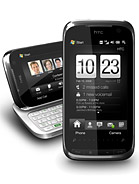
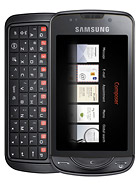
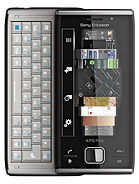
HTC Touch Pro2 • Samsung B7610 OmniaPRO • Sony Ericsson XPERIA X2
Finally, we take a peek at one the most interesting Android offerings on the market. Motorola MILESTONE offers a slightly bigger display with a drop more resolution (3.7" and 480 x 854 pixels) and runs the latest Android - 2.0 Eclair. A bold comeback for 
Now, how about revolution eating its own children? We doubt the N900 will fall victim to the market it's changing. There are very few handsets we would so much as consider against the N900 for Internet browsing. Its tablet roots are strong enough to take care of that. The N900 has put Maemo on the mobile platform map and has finally given Nokia an edge in the catch-up game they've been playing with their controversy-ridden Symbian S60 5th so far. Nokia now have two touch platforms to work with and we have front row seats. We can hardly wait.
Samsung S5620 Monte review: Well connected
Introduction
Affordable touch phones are all over the place so the 
The Samsung S5620 Monte has both 3G with HSDPA and Wi-Fi for browsing and data, and a built-in GPS receiver for location services. The Monte has a capable web browser (with Flash support) and a decently sized 3” screen. The GPS can also transform the Monte into a proper SatNav unit thanks to the free NaviExpert app. However, the free license is available for phones sold in the Czech Republic.
For the impatient readers, here’s a rundown of the Samsung S5620 specs – the good and bad of it.
Key features
- Quad-band GSM/EDGE, UMTS 900/2100, HSDPA 3.6 Mbps
- 3" capacitive TFT touchscreen of WQVGA resolution, 256K colors
- TouchWiz 2.0 Plus user interface with multitasking support
- 200 MB onboard storage, hot-swappable microSD card slot (up to 16GB)
- 3 megapixel camera with smile detection, QVGA video @ 15fps
- Secondary video-call camera
- Wi-Fi connectivity (b/g)
- GPS receiver with A-GPS; Free GPS
navigation with NAVTEQ maps
- Bluetooth 2.1 with A2DP, USB v.2.0
- microUSB slot (with charging support)
- Standard 3.5 mm audio jack
- DNSe sound enhancements
- Find Music recognition service
- FM radio with RDS
- Office document viewer
- Smart unlock
- Social networking integration with direct file uploads
- Accelerometer for auto screen rotate, turn to mute
Main disadvantages
- Free GPS navigation is for Czech Montes only
- No on-screen QWERTY keyboard
- Flash in browser eats too much RAM, can’t play YouTube videos
- No games preinstalled
- Task manager cannot be used for switching between apps
If you’ve read our preview you’d know the S5620 Monte was orange-on-grey back then. Samsung have obviously changed their mind since and put a tux on the Monte – it’s now grey on black – a bit more conservative.
The preview was written before the Samsung Bada OS came about but now that we’ve played with it too, we can do a better comparison. The Monte is a feature phone and Bada is a smart platform but in the end they both share the TouchWiz DNA. What that means is that the interface of both is pretty similarly – at least graphically.
| GENERAL | 2G Network | GSM 850 / 900 / 1800 / 1900 |
|---|---|---|
| 3G Network | HSDPA 900 / 1900 / 2100 | |
| Announced | 2010, February | |
| Status | Coming soon. Exp. release 2010, July 17 |
| SIZE | Dimensions | 123 x 59.8 x 14.9 mm |
|---|---|---|
| Weight | 155 g |
| DISPLAY | Type | Super AMOLED capacitive touchscreen, 16M colors |
|---|---|---|
| Size | 480 x 800 pixels, 3.7 inches | |
| - Accelerometer sensor for UI auto-rotate - Proximity sensor for auto turn-off - Multi-touch input method - Projector UI - Scratch-resistant surface - Handwriting recognition |
| SOUND | Alert types | Vibration, MP3 ringtones |
|---|---|---|
| Speakerphone | Yes, with stereo speakers | |
| - 3.5 mm audio jack - DNSe (Digital Natural Sound Engine) |
| MEMORY | Phonebook | Yes, Photocall |
|---|---|---|
| Call records | Yes | |
| Internal | 16 GB storage, 512MB ROM, 384MB RAM | |
| Card slot | microSD, up to 32GB |
| DATA | GPRS | Class 10 (4+1/3+2 slots), 32 - 48 kbps |
|---|---|---|
| EDGE | Class 10, 236.8 kbps | |
| 3G | HSDPA 7.2 Mbps, HSUPA 5.76 Mbps | |
| WLAN | Wi-Fi 802.11 b/g/n, DLNA | |
| Bluetooth | Yes, v3.0 with A2DP | |
| Infrared port | No | |
| USB | Yes, microUSB v2.0 |
| CAMERA | Primary | 8 MP, 3264x2448 pixels, autofocus, LED flash |
|---|---|---|
| Features | Geo-tagging, face, smile and blink detection | |
| Video | Yes, 720p@30fps, video light | |
| Secondary | Yes, VGA |
| FEATURES | OS | Android OS, v2.1 (Eclair) |
|---|---|---|
| CPU | 800 MHz processor | |
| Messaging | SMS, MMS, Email, Push Email, IM, RSS | |
| Browser | WAP 2.0/xHTML, HTML | |
| Radio | Stereo FM radio with RDS | |
| Games | Yes | |
| Colors | Black | |
| GPS | Yes, with A-GPS support | |
| Java | Yes, MIDP 2.0 | |
| - Social networking integration with live updates - Built-in WVGA projector - Google Search, Maps, Gmail - YouTube, Google Talk integration - MP3/WMA/WAV/eAAC+ player - MP4/H.263/H.264/Xvid/DivX player - Image editor - TV out - Organizer - Voice memo - T9 |
| BATTERY | Standard battery, Li-Ion 1800 mAh | |
|---|---|---|
| Stand-by | Up to 630 h (2G) / Up to 530 h (3G) | |
| Talk time | Up to 14 h 10 min (2G) / Up to 7 h 20 min (3G) |
| MISC | SAR EU | 0.62 W/kg (head) |
|---|
| GENERAL | 2G Network | GSM 850 / 900 / 1800 / 1900 - SIM 1 |
|---|---|---|
| GSM 850 / 900 / 1800 / 1900 - SIM 2 | ||
| 3G Network | HSDPA 2100 - SIM 1 only | |
| Announced | 2010, June | |
| Status | Coming soon. Exp. release 2010, June |
| SIZE | Dimensions | 113.5 x 55.5 x 14.3 mm |
|---|---|---|
| Weight | 112 g |
| DISPLAY | Type | TFT touchscreen, 256K colors |
|---|---|---|
| Size | 240 x 400 pixels, 3.2 inches |
| SOUND | Alert types | Vibration; MP3 ringtones |
|---|---|---|
| Speakerphone | Yes |
| MEMORY | Phonebook | 1000 entries, Photocall |
|---|---|---|
| Call records | 30 dialed, 30 received, 30 missed calls | |
| Card slot | microSD, up to 8GB |
| DATA | GPRS | Class 12 (4+1/3+2/2+3/1+4 slots), 32 - 48 kbps |
|---|---|---|
| EDGE | Class 12 | |
| 3G | HSDPA 3.6 Mbps | |
| WLAN | Wi-Fi 802.11 b/g | |
| Bluetooth | Yes, v2.1 with A2DP | |
| Infrared port | No | |
| USB | Yes, v2.0 |
| CAMERA | Primary | 5 MP, 2592х1944 pixels, LED flash |
|---|---|---|
| Video | Yes, QVGA@30fps | |
| Secondary | Yes |
| FEATURES | Messaging | SMS, MMS, Email, Push Email, IM, RSS |
|---|---|---|
| Browser | WAP 2.0/xHTML, HTML | |
| Radio | Stereo FM radio with RDS, FM recording | |
| Games | Yes + downloadable | |
| Colors | Black | |
| GPS | No | |
| Java | Yes, MIDP 2.1 | |
| - Dual SIM (Dual standby) - MP3/WAV/WMA/eAAC+ player - MP4/H.263/H.264 player - Organizer - Document viewer - Voice memo - T9 |
| BATTERY | Standard battery, Li-Ion 1200 mAh | |
|---|---|---|
| Stand-by | Up to 420 h | |
| Talk time | Up to 12 h 50 min |















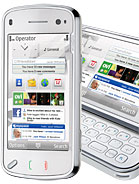
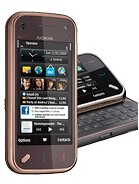








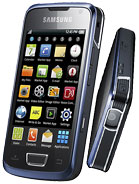
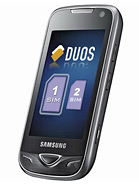
No comments:
Post a Comment